Sarah’s Hope
How a young girl’s heroic fight against cancer has become her legacy
This is a story of a child’s losing battle with cancer. It’s also a story about how I failed her.
On a grey September evening, the rain softly washing the streets, I weave through city traffic toward the Watkin family residence, the fast-falling dark of a new season receding in my rearview mirror. Shifting into park and shutting the car door, I collect my thoughts with a succession of deep breaths before walking up to the home, a typical house on a typical street in a typical suburban neighbourhood. Everything is as it should be. Only it’s not.
“Hi, I’m Mitch!” says seven-year-old Sarah Watkin, eyes twinkling with little-girl mischief. “Hi, I’m Sarah!” parodies the real Mitch Krystantos, her towering best friend and co-conspirator. The two collapse in a fit of laughter at my bewildered expression before Sarah races off to the playroom, her younger sister, Elizabeth, and the plush brown teddy bear I brought for her in tow.
Sarah is the classic first-born, a natural leader, whose inherited silliness and spirit shine through the contents of framed family photos hung disparately throughout the home: Sarah and Elizabeth with sudsy smiles in the bathtub, parents Leah and Mark giggling in bed with their babies, Sarah’s cropped golden hair peeking through a gilded crown.
“She’s fun and energetic. She loves life, she loves to play,” explains mother Leah Watkin, 37, with nine-month baby boy Matthew tucked safely in the crook of her arm.
“She likes worms and bugs and junk in the mud, but at the same time she likes pretty dresses and high heels,”
adds father Mark Watkin, 39. His winning smile belies the pained sadness pooling in both their eyes. “She’s the perfect girl.”
The three of us now sit facing each other on the couch in the family room, the TV left on to muffle our voices. We speak cautiously and sometimes in whispers, eyes often darting over our shoulders. Sarah suddenly bursts into the room, her Minnie Mouse dress hanging off her lanky 54-pound frame. She quickly zeroes in on the stranger in her home, who is teetering between empathy and journalistic objectivity. As if sensing something amiss, she shoots me a quizzical look and asks who I am and why I’m here, and will you please come play with me? Sarah has hardly any friends her age anymore, the breach to living in and out of hospitals for so long. Before a half-truth stammers out my mouth Mitch, 46 — a former volunteer at SickKids who met his forever sidekick in the oncology unit — acts on his feet with an irresistible offer of hide-and-go-seek. The unspoken truth is that Sarah’s cancer is back.
The elephant in the room is large and overpowering, but we do our best to tiptoe around its encroaching shadow. Mark is now a crackerjack comedian, disguising his feelings behind an impermeable wall of witticisms, while Leah’s convincingly calm and collected front helps to distribute the weight of their agony. Yet the boiled, heavy edges of heartbreak are conspicuous, blurred only by one-liners and the ear-to-ear smiles of parents doing everything they can to rise above the quicksand crumbling at their feet. “What’s important to our family is to keep smiling, to have joy,” says Leah. “We can’t fall apart in front of our kids because they deserve more than that, they deserve to be normal.”
The couple hardly take their eyes off each other as the words escape their mouths, a language of their lives that is foreign to me: sleepless nights and poor prognoses, months of wracking fear; days of distinctively cold, hard drops in their stomachs whenever Sarah’s blood counts came back dangerously low. “We do whatever it takes to make every day a happy day. But once the kids fall asleep we look at each other and do a lot of crying, there’s a lot of denial, a lot of disbelief, a lot of ‘how is this happening to us?’” says Mark. An interminable silence fills the room.
In October 2012, Sarah was first diagnosed with acute myeloid leukemia (AML), a life-threatening form of blood cancer that progresses rapidly without treatment. While classmates her age settled into senior kindergarten, Sarah was rushed to the Hospital for Sick Children, her health deteriorating faster than her parents could even absorb her name and the word “cancer” in the same sentence. From that moment on, the happy, normal life Leah and Mark had built for their young family quickly began falling around them.
What followed was a whirling vortex of cold reality and upheaval: Mark immediately took a leave of absence as a high school teacher to relocate his family from Thornhill to Toronto, where Sarah was hospitalized at SickKids for close to six months. Living out of a condo within walking distance of the hospital — with rent hovering just below $3,000 a month — was an astronomical price but a small one to pay to be next to their ailing daughter. Next came a barrage of blood and platelet transfusions, and rounds of intense chemotherapy to obliterate the cancerous cells coursing virtually everywhere in Sarah’s blood system.
According to the Canadian Cancer Society website, leukemia develops when blood stem cells in the bone marrow change and no longer grow or behave normally. In AML, these abnormal cells, or leukemic cells, develop quickly and suddenly, crowding out normal blood cells and preventing them from transporting oxygen and carbon dioxide to and from the tissues and staving off infection.
Dr. Johann Hitzler, Sarah’s treating oncologist at the Hospital for Sick Children, elaborates on the perplexity of this rare and aggressive blood cancer. At least 250 Canadian children are newly diagnosed each year with a form of leukemia. AML accounts for about 15 per cent of childhood leukemia diagnoses, with the chance of disease-free survival sitting at around 55 to 60 per cent — significantly lower than the success rate of 80 to 90 per cent for children diagnosed with acute lymphoblastic leukemia (ALL). “When treatment does not work and the cancer comes back — the AML shows a relapse — then the chance of success becomes much smaller. At this stage, children with AML frequently will not be treated with chemotherapy but with a stem cell transplant,” he explains.
Sarah’s first relapse surfaced during treatment in December 2012; two months later the Watkins readied themselves for a possible stem cell transplant by shedding light on her story through a Facebook page called Sarah’s Drive for Hope. At that point, no one in her family, including sister Elizabeth, a toddler, and baby brother Matthew, whose cord blood was tested after he was born, came up as suitable matches.
Documenting her ups and downs on Facebook with status updates and photos of Sarah smiling through the bad days, Leah and Mark held on to hope as they waited for Sarah’s stem cell match to materialize. With the help of the Canadian Blood Services’ One Match Stem Cell and Marrow Network program, a total of 17 stem cell and blood donor drives were held in Sarah’s name. Sadly, no match was ever found for her. Having first heard about Sarah in the early part of 2013, an overwhelming wave of guilt and shame washes over me — I had never thought to step forward as a donor. Could I have been the one to save her? The realization of my diffusion of responsibility, of being a bystander, gnaws at my conscience for days.
When Sarah relapsed for the second time in October 2013, it dealt a decisive blow to the family. “We thought we won, we thought we won the first round, you know. You fight Mike Tyson, and you [really] fight Mike Tyson, and you win the championship, you hold the belt, you get out of the ring and go home and then a few months later, Mike Tyson wants to fight with you again. That for me was the hardest part,” says Mark.
For Leah it was the first day they were told Sarah had AML after filling a prescription for strep throat. “It felt like my chest was being ripped out; my body just exploded. I tried everything I could do to keep my pieces together.”
Time was running out.
“[Sarah’s] leukemia was extremely aggressive,” says Dr. Maarten Egeler, medical director of bone marrow transplantation at SickKids. “To give her any chance, we wanted to give her a transplant with ‘new’ stem cells. But as we all know, medicine is not black and white.” Because there was no family match or unrelated donor worldwide for Sarah available, the Dutch doctor in the field of stem cell transplantation and histiocytoses put Sarah on the map to haploidentical transplantation — a half-match bone-marrow transplant more often performed in Europe. Because children get half of their human leukocyte antigens (HLA) from their parents, Leah and Mark were both tested to identify Sarah’s best half-match. Leah’s cells proved to have greater compatibility with Sarah’s to fight cancer on a cellular level. With no hesitation, Leah donated the stem cells from her bone marrow to Sarah in January 2014. “You feel achy for a few days but I’d do it again and again, for people I don’t even know.”
The chance of a cure for leukemia drops dramatically once it returns after transplant, more so if it comes back multiple times and very shortly after transplant.
Less than five months after the half-match bone-marrow transplant, the unstoppable, angry cancer in Sarah returned for the third time, sparking an outpouring of support for the family. “When you get a cancer diagnosis, as bad, as terrible as it is, you do see rainbows. We have seen kindness from strangers you wouldn’t believe. The bright side to things is that we have seen amazing things on the cancer floor, in the community, around the country. I have faith in the human spirit, I do,” says Mark.
The Watkins then embarked on a variety of adventures that “packed 10 years’ worth of summers into one,” with a trip to Disney World, a visit to Toronto’s Ripley Aquarium and hanging out with lemurs and an adult tiger at the Bowmanville Zoo among the highlights. Sarah even got to walk down the aisle with her father at her uncle’s summer wedding, which was quickly arranged to ensure her presence. “We were terrified because they told us she had weeks left, so we didn’t know if she would make it. Every once in a while you have a night you don’t want to end, and that wedding was one of them,” says Mark.
Sarah is now living as normal a life as she can at home with her family and receives supportive treatment twice a week at SickKids. Leah and Mark praise the hospital’s doctors and nurses who continue to fight for cures and the best treatments for all children fighting leukemia. Although Sarah’s condition is stable for now, she continues to battle AML without knowing it; her mother’s cancer-fighting cells from the half-match transplant are proving to be a worthy opponent of time.
It’s all the Watkins can ask for at this point.
“Mark and I look at her and see this is the happiest she’s been in the past two years. She feels free, she feels free of cancer, and to give her that burden, that anxiety … we’re not ready to do that to her,” says Leah, a former nurse. “[Doctors] say children don’t see death the same way, but Sarah knows death. She would be terrified. Her biggest fear is getting cancer again and going back to the hospital again. We were walking one day and she was making a wish on the first star, you know, ‘I wish I may, I wish I might,’ and she said, ‘I wish I never got cancer again.’”
Despite everything, the Watkins have always demonstrated a remarkably positive outlook on life for the sake of all their three children. When Sarah began losing her hair, Leah and Mark shaved their heads; when Sarah regained strength during remission, the family participated in the annual Light the Night Walk Toronto last October, helping to raise funds for the Leukemia and Lymphoma Society of Canada. They continue to live like tomorrow doesn’t exist because it’s the only way they know how.
“Some people lose their kid in an accident or a school shooting. We know the end is coming and so our priority is to,” Leah takes a deep breath, “to bring joy to Sarah.”
Another goal for the couple is to increase funds being directed to childhood blood cancers, and to continue to raise awareness for much-needed stem cell donors. At any given time, there are close to 1,000 patients in Canada searching for an unrelated donor for a stem cell transplant.
“In this world, Sarah’s name stands for a lot of good. She’s gotten thousands of people to come out and donate their stem cells and blood,” says Mark. “We’ve had four people find matches because there was a face to the cause, to the need. This is Sarah’s legacy. If we can keep going, and keep putting her face to childhood cancer, it’s worth it. It won’t help Sarah, but it will help somebody else out there.”
“She went through chemo smiling. When you say who’s your hero, it’s Sarah, she’s the one,” says Leah.
Saying goodbye to Sarah is hard. It’s not every day you meet someone who’s helped save lives, especially someone who’s just seven. She eagerly gives me a hug and a wave as I leave her behind in the bright playroom of Despicable Me minions and a kiddie tent draped with a fuchsia Happy Soul Project cape, Sarah’s first initial embossed below a rainbow. Leah has gone upstairs now, putting Matthew and Elizabeth to bed. Mark walks me to the door. As I look back for one last glance at Sarah, her eyes and hands poring over puzzles of a colouring book, the clarity of the moment is blinding.
A few weeks later I’m back in the car, driving through tree-lined streets blazing with the foliage of a fall come too soon. I pull into the parking lot of the Chris Gibson Centre in Brampton, where a stem cell and blood donor drive is being held. Walking through double doors, a volunteer looks up from a table covered in red plastic, asking if I’m here to become a stem cell donor. With a nod I reply yes, and fill out a form with my information before swabbing my mouth with sticks that have cotton ends.
Twenty minutes later I’m back outside, looking up at an expansive blue sky, wishing I had taken time out of my much-more-important busy life to do this two years ago, shaking my head at how easy it is to save a life, how self-fulfilling and selfless. And if my day ever comes, if I’m ever contacted with the news that I’m a match for someone, I know painfully in my heart that it won’t be for Sarah, but it will be because of her.
Who Can Donate?
Anyone in general good health between the ages of 17 and 35 who is willing to donate to any patient in need anywhere in the world.
Younger male donors provide patients with the very best quality of life after transplant. Men are also typically larger than women, and can produce a greater volume of stem cells for the patient. Only 16% of the Network is made up of young men under 35.
Diverse registrants from all communities are in great need. Because different antigens appear more frequently in different communities, a patient’s best chance of finding a match is much greater with someone of similar ancestry.
Right now, there are over 300,000 Canadians signed up to donate stem cells either by bone marrow or peripheral blood stem cells.
If you are a match and agree to donate, bone marrow stem cells are taken from your hip bone using a special needle. The procedure is done under general anesthetic, with some stell cell donors experiencing some soreness in their lower back for just a few days.
Visit www.blood.ca/onematch if you’re interested in becoming a potential stem cell donor. You can register at home, make an appointment or visit a local school holding a drive in your community.
INFORMATION PROVIDED BY OneMatch Stem Cell and Marrow Network
Visit the “Sarah’s Drive for Hope” page on Facebook, and Smiles for Sarah at
www.gofundme.com
For more information on childhood blood cancer, visit llscanada.org and sickkids.ca
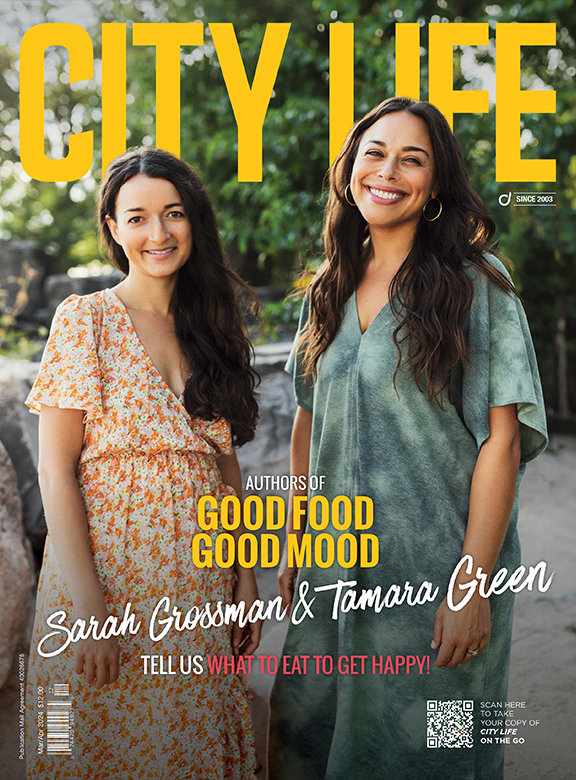

































































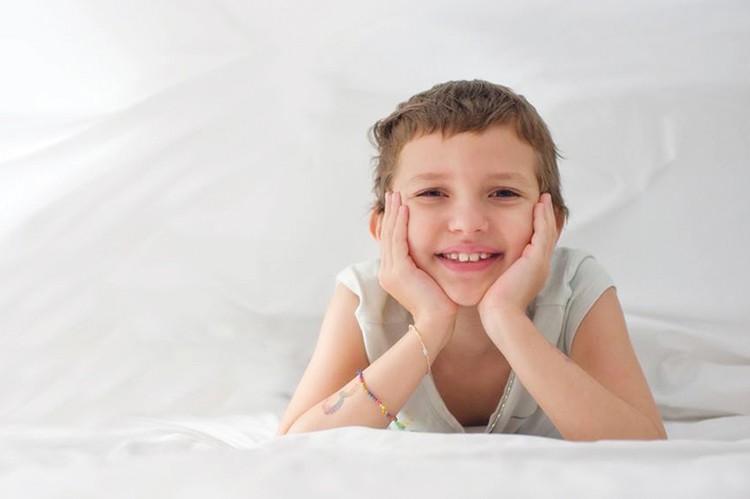
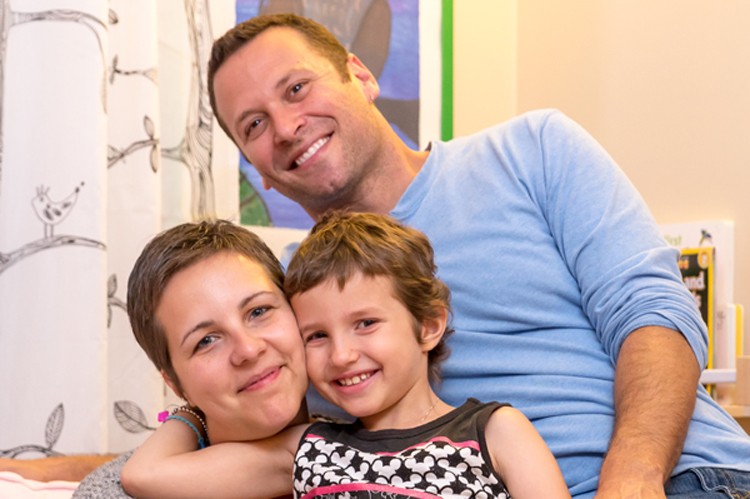
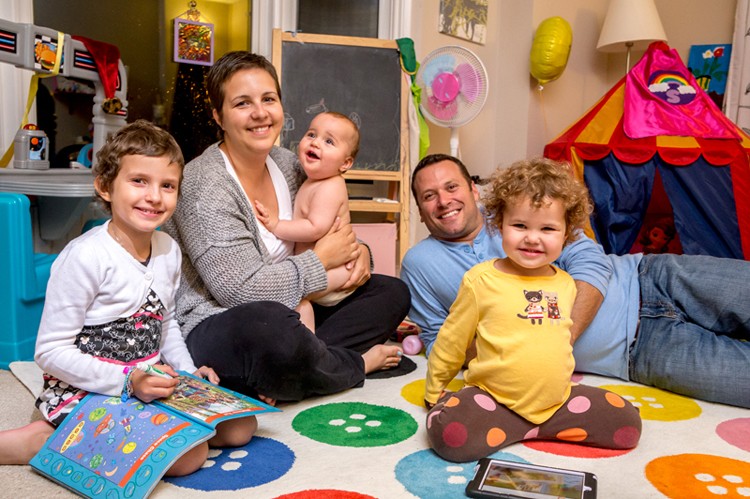
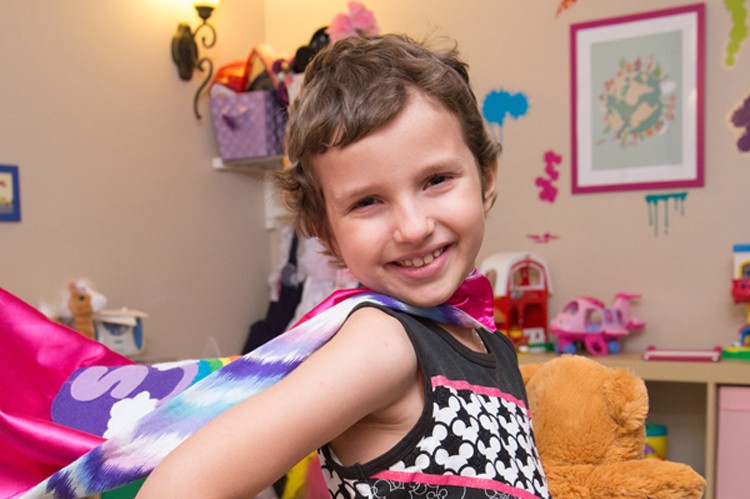
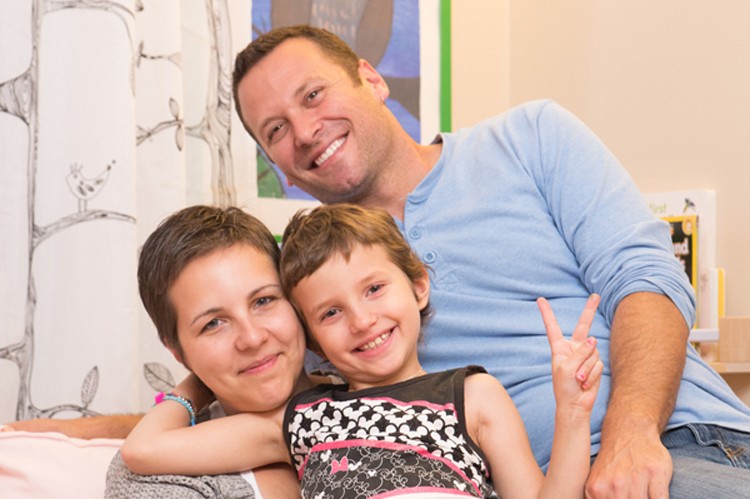
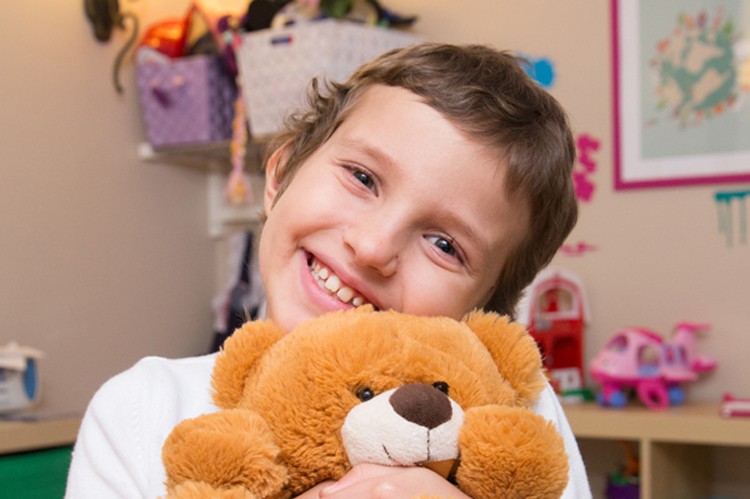
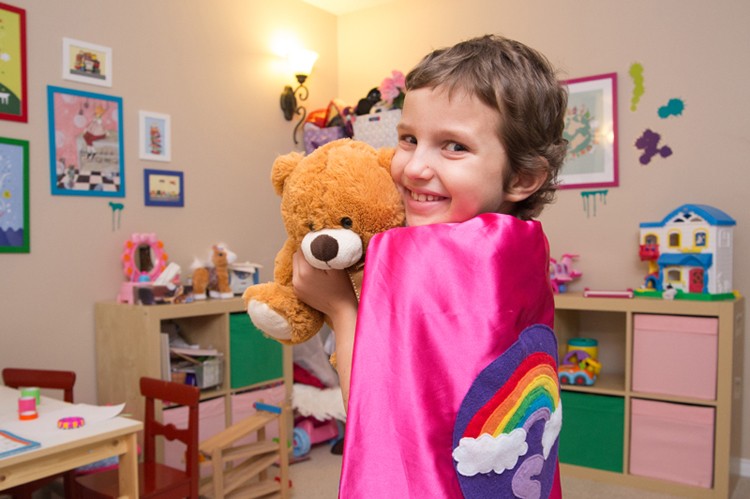
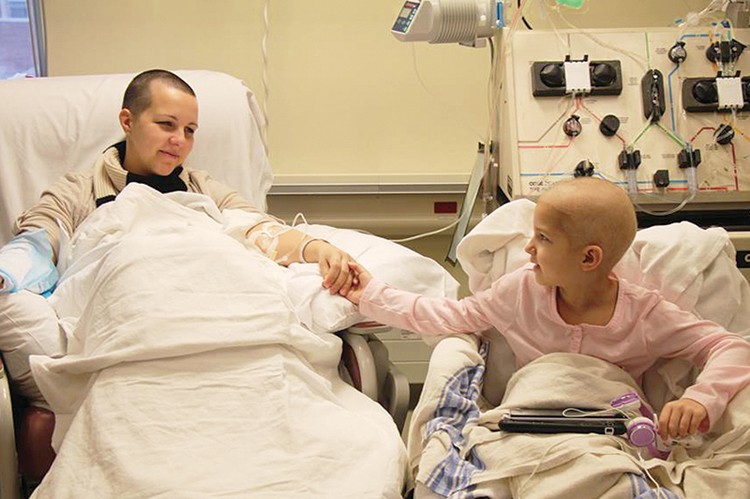
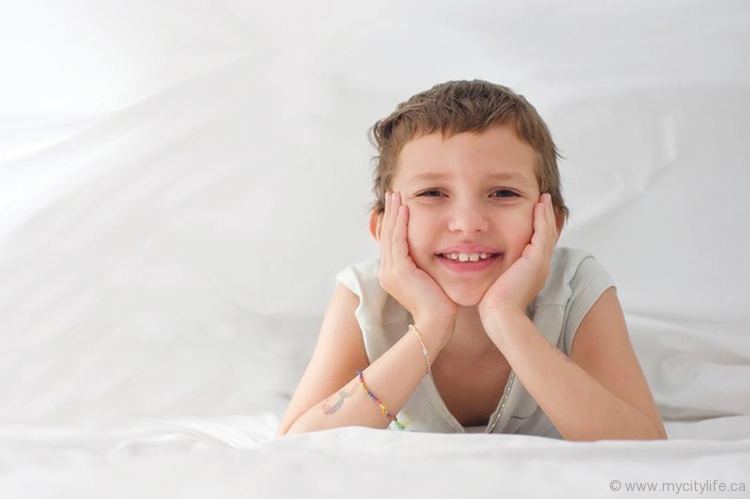

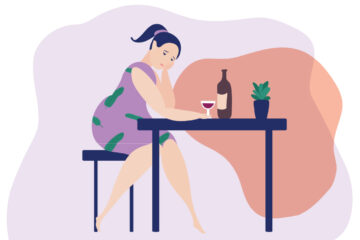
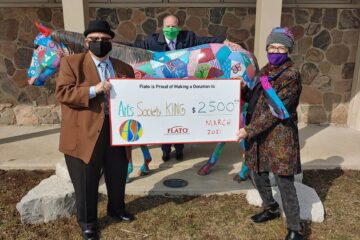

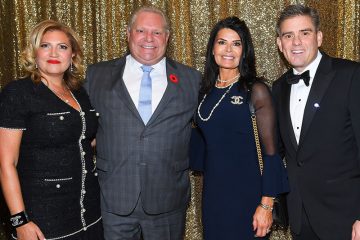
5 Comments
Why can’t a healthy 40 year old donate????
I’m so glad Sarah is rocking our Happy Soul Project cape- We are all thinking of her and her family…Fight on Little one…Fight on
Hi @Stacey, thank you for your inquiry. The short response to your question is that the age bracket of 17-35, and especially young male donors, provides patients with a higher rate of success after transplant. If you would like to help, an alternative is donating blood, as cancer patients do require many transfusions through their course of treatment. If you have anymore questions, please feel free to contact the One Match Stem Cell and Marrow Network at http://www.blood.ca/onematch. Thanks for reading City Life Magazine.
my son had his unrelated bone marrow stem cells infused today! many thnx to selfless donor!! his name is adam poehlmann[my son] and he has been living with cancer for 6 years. first diagnosed at 16 and now 22 yrs old. this is his hope for a cure! onematch is a wonderful registry. thxn for bring attention to it. my thoughts are with that wonderful and strong family.
Great read thanks for sharing! I hope Sarah has recovered well. Crowdfunding is another effective way to easily raise funds and more people are benefiting from it everyday. Check out crowdfunding platforms like https://www.plumfund.com/ to learn more about its benefits.